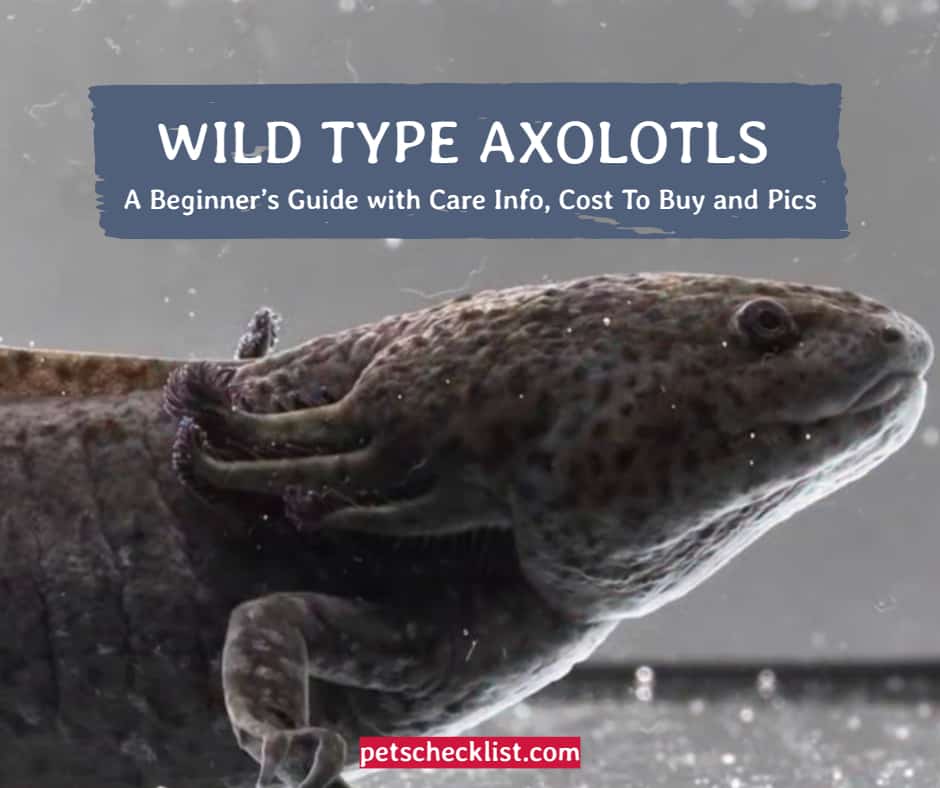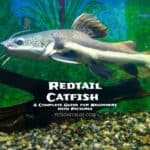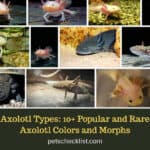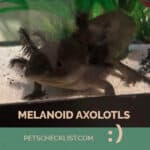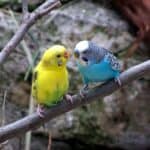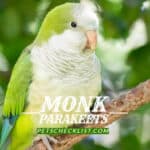Table of Contents
What Is A Wild Type Axolotl?
A wild-type axolotl is one of the basic types and colors of an axolotl. They are in colors of green, brown and black. Wild-type axolotl has a speck of shiny golden pigments, but these may vary to lighter or darker variants. The given name wild type refers to the natural color of axolotls that usually appears in the wild. Baby axolotls are brighter in color and tend to be darker as they age and can end up looking almost black. The center of their eyes is black with a golden or shiny ring around them and surprisingly grayish or purplish gills.
Wild type can be distinguished from a melanoid by the presence of bright pigments. Brilliant golden spots, together with shiny rings in the eyes, means it is a wild type. If there are no sparkling rings, it is melanistic.
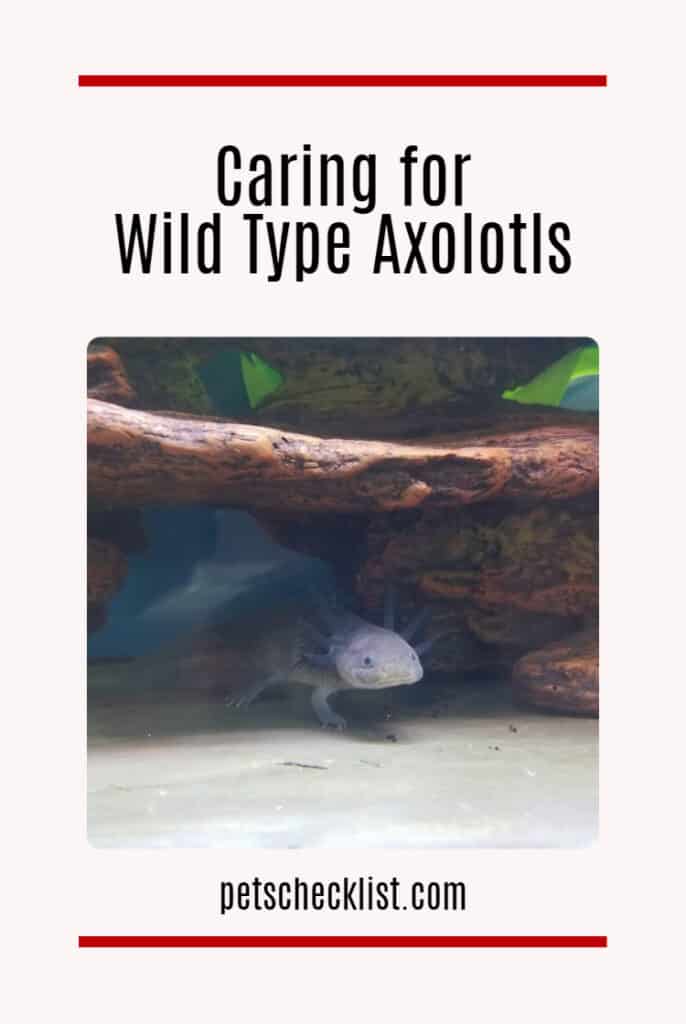
The Average Cost Of Wild Type Axolotl
What is the cost of getting a wild type axolotl? On average, it can cost between $30 to $100. If you want a more exotic type of axolotl, expect a higher price.
Since axolotls are widely known and can be your pet, people show different interests in adopting one. You can buy axolotls from reputable pet shops and those whom you can trust. Check with your local pet store if there is an available axolotl. Before you buy them, you have to conduct a thorough research about their health condition, history, age, and other things that involve the proper axolotl care.
Pick a wild type axolotl that is in a good state before you proceed to buy it. Check their physical condition and observe if they have health problems. Know their overall status and even their behavior. Be observant and choose the best as you will take full responsibility for them.
The Average Lifespan Of Wild Type Axolotl
An average lifespan of a wild type axolotl is around ten years, but it depends on their situation. If they are living in captivity, they can live for about 15 years or higher. Some are reportedly living up to 20 years, which is quite rare. With the proper care, an axolotl can live a longer life than expected. However, there are some wild type axolotls born with health issues because of their genes. They typically live for about five to six years.
Like any aquatic creature, a wild type axolotl is sensitive to its environment, especially in water conditions. With any toxics that they might encounter, it may shorten their lifespan. So before considering adopting a wild type axolotl, make sure you are vigilant to tank maintenance and overall care.
Wild Type Axolotl Age Of Maturity
A wild type axolotls’ maturity comes at the age of six months. With that time, they are fully grown and matured. Once they have already reached that stage, you have to separate them into different tanks because axolotls are very aggressive toward their tank companions. They tend to fight and eat their small tank mates. Wild type axolotls are popularly known for cannibalism.
A wild type axolotl is sexually mature from 18 to 24 months, length from 15 to 45cm or 6 to 18 inches. Still, it depends on the frequency and quality of food, the water temperature, and environmental conditions. Female wild type axolotl takes a little more time to mature than males. Male wild type axolotl is advance with a month or two.
Decorations For Wild Type Axolotl Tanks
Decorating your wild type axolotls’ tank can be fun. There are various decorations that you can put and add colors to your tank. Decorating a tank should depend on what type of water species you have. A wild type axolotl is good with anything as long as they have a hiding place. These aquatic creatures like to be isolated where they can find peace and comfort. For a substrate material, you can add sand for your wild type axolotls. Avoid using gravel as your substrate as they can swallow small pieces of it that might cause intestinal blockage. You can still add gravel as long as they are larger than the axolotls’ head.
The hiding place is typically in the form of rocks, caves, flower pots, and ceramic mugs. Wild type axolotls appreciate driftwoods and plastic decorations as their hiding zones.
You can put both plastic and live plants as they add color to the aquarium. Wild type axolotls do well with Anubis and java fern.
And do not forget to put a filter as it is an absolute must-have for aquariums. Be sure to get a filter powerful enough to make a full tank cycle, as wild type axolotls generate waste.
You need to perform 20 percent water changes every week to keep water conditions in a good state.
Foods Of Wild Type Axolotls
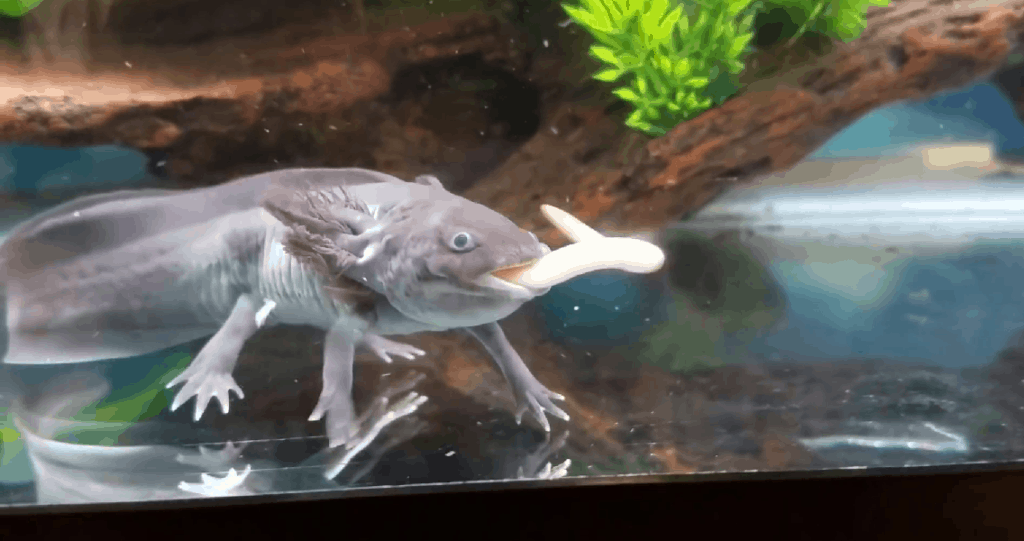
Wild type axolotls spend their entire life living underwater, and people are confused about the food that they eat. Wild axolotls are carnivores. They should follow a strict but healthy diet anywhere between 30 to 60 percent of protein. Wild type axolotls are not picky eaters, but they do require nutritious foods to stay healthy.
Wild axolotls are eager to accept their food. They can trick you by offering them too much. Before you feed them, make sure to remove leftovers to prevent water condition issues. These are often the mistakes of beginners.
Live Earthworms
Live earthworms are a great staple food for wild type axolotls. They are nutritious food for this amphibian, and experts say it is the right choice for everyday feeding. If you are feeding a baby wild type axolotl, try to buy a container and fill them with live earthworms of different sizes. Wild type axolotls should be happy as they age because they can eat bigger live earthworms.
Live Earthworms have all the nutrients a wild type axolotl need. Aside from it, baby axolotls do not need other food required besides these worms. Live worms are far superior in nutrition to frozen earthworms or feeder fish. Axolotls do not chew their food, so you must cut large earthworms into pieces to reduce the risk of choking your wild type axolotl.
Small Fish
Wild type axolotls can eat fish, especially the smaller ones. Many axolotl owners feed their amphibians with small fish as part of their diet. Before you keep wild type axolotls with fish in the tank, it is preferable to know which fish species will be better for axolotls.
Small fish are trusted because they are nutritionally essential for wild type axolotls. Before you feed the small fish to your wild type axolotl, put it in isolation for about two weeks. It is beneficial for your axolotl as they allow them to use their instincts to hunt.
Mollusks
Wild type axolotl also eats mollusks. They can happily nibble on mollusks, but this is not the best way to feed your wild type axolotl. It can be a problem if you own a tank with axolotls and snails inside it. There is a snail that has sharp shells that can harm the axolotls’ gut. But since mollusks are soft-bodied invertebrates, they are safe to be eaten by axolotls.
Insect Larvae
A wild type axolotl can eat young insect larvae one month from hatching. There are commonly fed fresh to these amphibians. It may sound unusual, but insect larvae can add nutritious value needed by the wild-type axolotl. It is better to give them insect larvae than feeds from some local pet stores as they may contain added chemicals that might not be good for axolotls. During the summer season, keep an eye out for insect larvae because wild-type axolotls will love it.
Worst Foods To Avoid For Axolotls
When it comes to feeding your wild type axolotls, you should research the list of what they should not eat. Of course, it is something serious as it may cause trouble for them. A wild type axolotl should not eat anything with a hard exoskeleton. Shellfish are not the recommended food as they have a hard exterior that can damage your pet’s digestive system.
A preserved or processed meat is not good for your wild type axolotl. We all know that there are chemical procedures implanted with preservatives that can potentially lead to health implications for this aquatic creature.
Your wild type axolotl should stay away from the feeder fish. They can transfer diseases and parasites to your pet. Feeder fish exposure can affect the axolotl’s diet and can result in Vitamin B deficiency. Insufficient Vitamin B in your wild type axolotl can lead to further issues such as Anemia.
Do’s When Caring For Wild Type Axolotls
In taking care of a wild type axolotl, you should be patient in spending time discovering what you need to know in proper ways to take care of an axolotl. Like normal pets, they are not that hard to keep, and their maintenance is like other aquatic creatures.
- In their tank, provide fine sand as the floor and put driftwood or rocks for their hiding place. Putting fine sand is to avoid them swallowing pieces of gravel, which leads to digestive issues. Rocks and driftwood are decorations used inside the tank for hiding places and caves. Live plants can be a decoration. However, they need to be well planted. Wild-type axolotls are careless as they move around the tank while their owners amusingly watch them.
- Once done setting up their comfortable home, you can now discover how they are clean and feed. Water quality is essential and should maintain through regular water testing kits and tank filters. The tank should be cleaned through a gravel siphon every two weeks to ensure they remove every piece of dirt. Preferrable around 6.5-7.5 should be the level, and closer to 6.5 is also acceptable. The maintained temperature range is between 14˚C and 18˚C. Handle your wild axolotl carefully as they have soft sensitive skin.
- Wild type axolotls should get a diet of live crickets, both live and frozen bloodworms, and pellets. You should hand-fed using tongs or large tweezers because it decreases the amount of waste and leftover foods in the tank. Feed them at least two to three times a week every night due to their nocturnal habits. Give them only a small portion of food or bite-sized pieces.
Don’ts When Caring For Wild Type Axolotls
Wild type axolotl’s owners may have their shortcomings when it comes to taking care of their aquatic companion. They unintentionally do things that they think are best for their axolotl just because they know that it is good for other pets. Erase that concept and treat your wild type axolotl different from them.
- Do not feed your axolotls more than twice a week. It’s not necessary to always feed an axolotl, especially if bad quality foods. It may cause diseases. Inadequate feeding can happen when we provide an inappropriate quality diet. Do not overfeed nor underfeed your wild axolotl.
- Do not let the tank water be contaminated. Contaminated water is the common cause of death of an axolotl. It can happen without any warning, and it is all because of our carelessness. Some owners prefer to have a tank without any filters installed. When wild axolotls do not feel comfortable in the tank, they feel stress, can have diseases, and worst, they can die.
- Do not neglect water temperature monitoring. Another misfortune that could happen because of inappropriate practices is the wrong temperatures. Some owners do not care about the temperature as if it is not a big thing for the safety of their wild type axolotl. They surpass the ideal water temperatures big time between 16-18 degrees.
- Do not place any accessories that are bigger than axolotls or anything sharp. Impaction can be a cause of the immediate death of your wild axolotl. Impaction happens when your axolotl consumes something it cannot digest, like gravel or big stones. It blocks the gut, and your axolotls can feel swollen and lead to a tragic death.
Final Thoughts
Wild type axolotl is no different from any other types of axolotls. They all need equal love and care from their owners. If you are willing to devote a tank for wild type axolotls and you can meet their unique needs, then you are capable of having one. They are interesting, and almost anyone will notice them and be amazed. For those people who love aquatic species, try to have a wild type axolotl.
If you love our content, we invite you to follow us on our social media outlets for more updates!
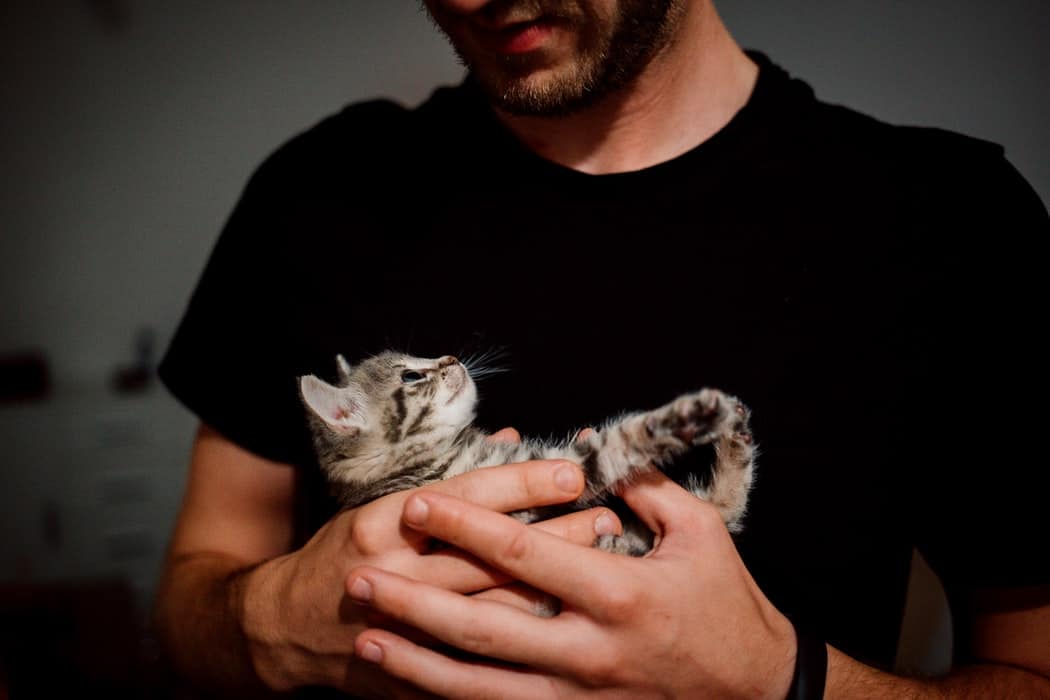
Hezekiah is a pet lover since birth, according to his parents. He started writing for the Pets Checklist in 2020. He is fond of playing with and taking pictures of different friendly animals around his neighborhood. He loves to read and write articles about pets, science, and music.

